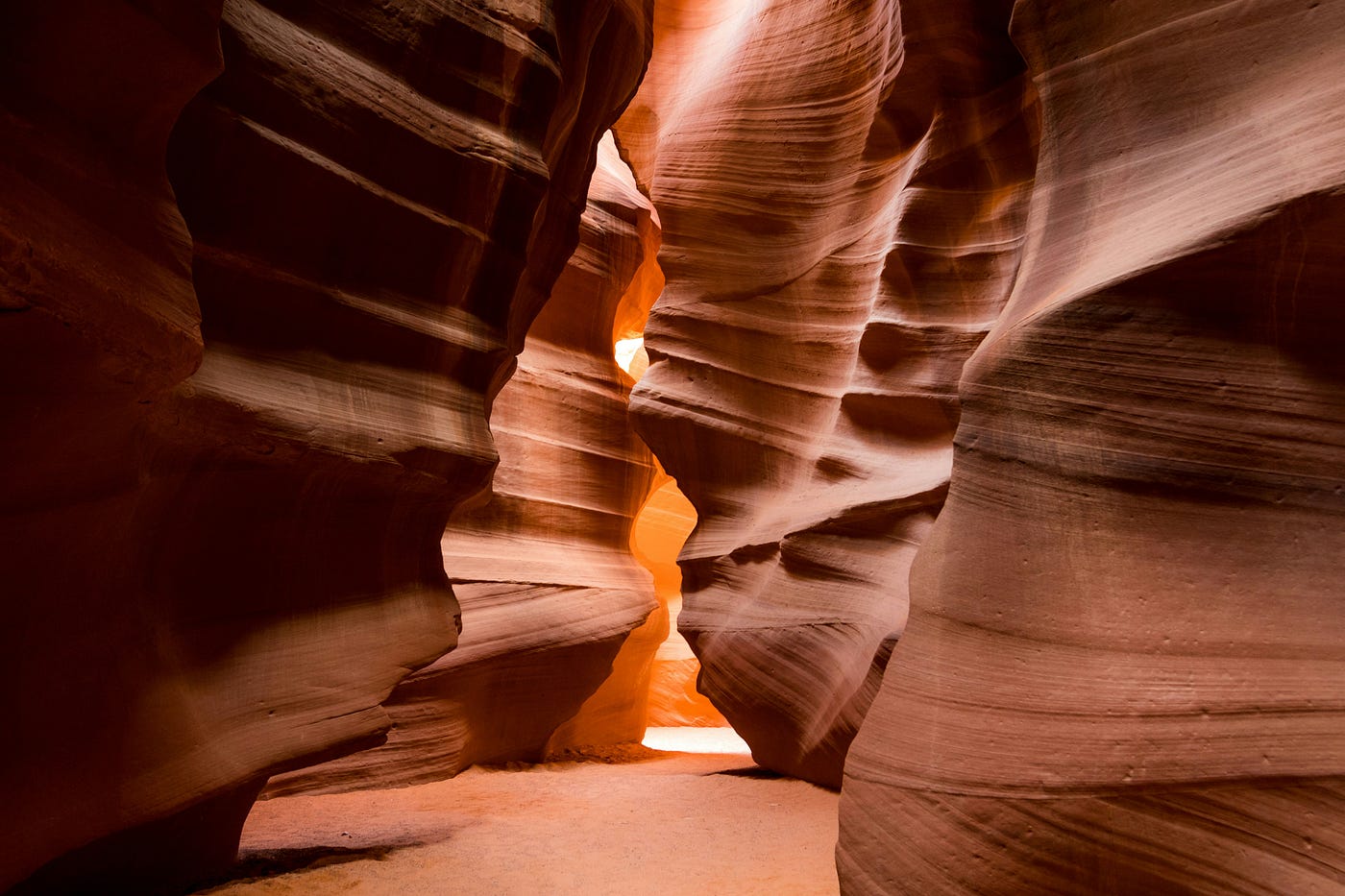Mysteries Of Antelope Canyon’s Sandstone Labyrinths

Have you ever wondered what makes Antelope Canyon so special? This natural wonder, located in Arizona, draws visitors from around the globe. Its stunning, wave-like sandstone formations create a surreal landscape that seems almost otherworldly. As sunlight filters through narrow crevices, it casts mesmerizing patterns and colors on the canyon walls. Photographers and nature lovers alike find themselves captivated by the ever-changing light and shadow play. Whether you're an avid hiker or just someone who appreciates nature's beauty, Antelope Canyon offers a unique experience. Ready to learn more about this breathtaking destination? Let's dive into the secrets of Antelope Canyon.
The Enchanting Beauty of Antelope Canyon
Antelope Canyon, located in Arizona, is a mesmerizing slot canyon known for its stunning sandstone formations. The canyon's narrow passageways and vibrant colors make it a popular destination for photographers and nature enthusiasts. Let's explore some of the most captivating spots within this natural wonder.
Upper Antelope Canyon: The Crack
Upper Antelope Canyon, often referred to as "The Crack," is famous for its easy accessibility and breathtaking light beams. These beams occur when sunlight pierces through the narrow openings above, creating a magical display of light and shadow.
Entrance to Upper Antelope Canyon: The journey begins with a short walk through a sandy wash, leading to the narrow entrance of the canyon. The anticipation builds as the walls close in, revealing the hidden beauty within.
The Cathedral Room: One of the most iconic spots in Upper Antelope Canyon, the Cathedral Room features towering walls and a spacious chamber. The light beams here create an ethereal atmosphere, perfect for capturing stunning photographs.
The Spiral Rock Arches: As you venture deeper into the canyon, you'll encounter the Spiral Rock Arches. These unique formations twist and turn, showcasing the intricate patterns carved by centuries of wind and water erosion.
Lower Antelope Canyon: The Corkscrew
Lower Antelope Canyon, known as "The Corkscrew," offers a more adventurous experience with its narrow passageways and steep ladders. This section of the canyon is famous for its dramatic rock formations and vibrant colors.
The Entrance to Lower Antelope Canyon: Unlike Upper Antelope Canyon, the entrance to Lower Antelope Canyon requires descending a series of metal ladders. This adds an element of excitement as you prepare to explore the winding passageways below.
The Corkscrew Passage: Named for its twisting, narrow corridors, the Corkscrew Passage is a highlight of Lower Antelope Canyon. The walls seem to dance with light and shadow, creating a surreal and otherworldly experience.
The Heart Room: Deep within Lower Antelope Canyon lies the Heart Room, a chamber with walls that resemble the shape of a heart. This spot is a favorite among visitors for its romantic and picturesque setting.
The Best Time to Visit Antelope Canyon
Timing your visit to Antelope Canyon can greatly enhance your experience. The play of light and shadow changes throughout the day, creating different moods and photographic opportunities.
Midday Light Beams: The best time to witness the famous light beams in Upper Antelope Canyon is between 10 AM and 12 PM. During this period, the sun is at the perfect angle to create those magical shafts of light.
Morning and Late Afternoon: For a quieter experience with softer lighting, consider visiting in the early morning or late afternoon. The colors of the canyon walls appear more vibrant, and the shadows add depth to the formations.
Tips for Capturing the Perfect Photo
Photographing Antelope Canyon can be challenging due to the varying light conditions and narrow spaces. Here are some tips to help you capture the beauty of this natural wonder.
Use a Tripod: A tripod is essential for keeping your camera steady in the low-light conditions of the canyon. It allows for longer exposure times, capturing the intricate details of the sandstone formations.
Adjust Your Settings: Experiment with different camera settings to find the best exposure. A higher ISO can help in darker areas, while a lower ISO will reduce noise in well-lit sections.
Focus on Composition: Pay attention to the lines and shapes created by the canyon walls. Use them to guide the viewer's eye through your photo, creating a sense of depth and movement.
Antelope Canyon's sandstone labyrinths offer a unique and unforgettable experience. Whether you're exploring the Upper or Lower sections, each twist and turn reveals a new wonder waiting to be discovered.
Embracing Antelope Canyon's Wonders
Antelope Canyon's sandstone labyrinths offer an unforgettable experience. The play of light and shadow creates a mesmerizing atmosphere, making every visit unique. Whether you're a photographer, nature lover, or adventure seeker, this natural wonder has something for everyone.
Guided tours ensure safety while providing fascinating insights into the canyon's history and geology. Remember to book in advance, as spots fill up quickly. Wear comfortable shoes, bring water, and prepare for a bit of a hike.
Respect the environment by following all guidelines and leaving no trace. This helps preserve the canyon's beauty for future visitors.
Antelope Canyon is more than just a destination; it's a journey through nature's artistry. Don't miss the chance to explore this incredible place. Your adventure awaits in the heart of Arizona's stunning landscapes.

